Successful leaders and entrepreneurs are valuable sources of motivation. When I feel like I need guidance, an inspirational quote can inspire me to do my best work. That’s especially true when they come from my favorite leaders — like Steve Jobs, Oprah Winfrey, and Walt Disney.
Many of these experts condense their life experiences and wisdom into short quotes that are meaningful and encouraging. I feel like I’m skimming a biography and jumping to the juiciest parts. So, I gathered a list of my favorite quotes so you can reap all the benefits without the search.
![Download Now: 250+ Famous Quotes [Free Kit]](https://no-cache.hubspot.com/cta/default/53/218f0385-73f5-48f1-9731-306238cbf450.png)
Whether you seek short motivational quotes about life or positive quotes to post online, these great quotes can help. Discover the most famous, motivating quotes in this post.
My favorite quotes contain messages that provide wisdom. I can carry these messages with me daily and find inspiration to be the best version of myself. You’ll notice below I’ve gathered bits of knowledge from activists, leaders, and authors.
Let these words give you hope and motivation to keep going, even when things are hard.
1. “You must be the change you wish to see in the world.” – Mahatma Gandhi
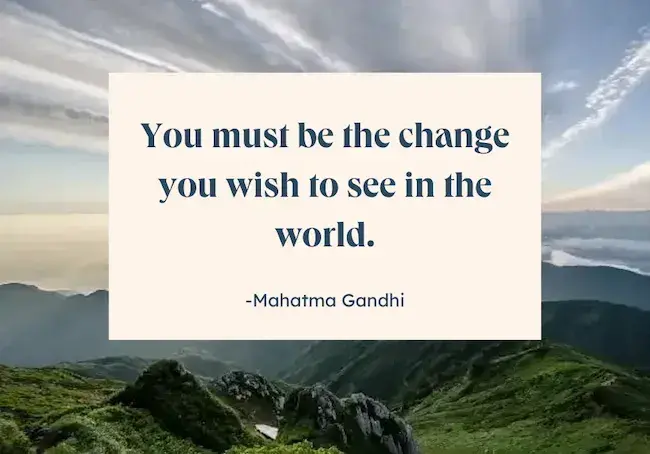
2. “Spread love everywhere you go. Let no one ever come to you without leaving happier.” – Mother Teresa
3. “The only thing we have to fear is fear itself.” – Franklin D. Roosevelt
4. “Darkness cannot drive out darkness; only light can do that. Hate cannot drive out hate: only love can do that.” -Martin Luther King Jr.
5. “Do one thing every day that scares you.” – Eleanor Roosevelt
6. “Well done is better than well said.” – Benjamin Franklin
7. “The best and most beautiful things in the world cannot be seen or even touched - they must be felt with the heart.” – Helen Keller
8. “It is during our darkest moments that we must focus to see the light.” – Aristotle
9. “Do not go where the path may lead; go instead where there is no path and leave a trail.” – Ralph Waldo Emerson
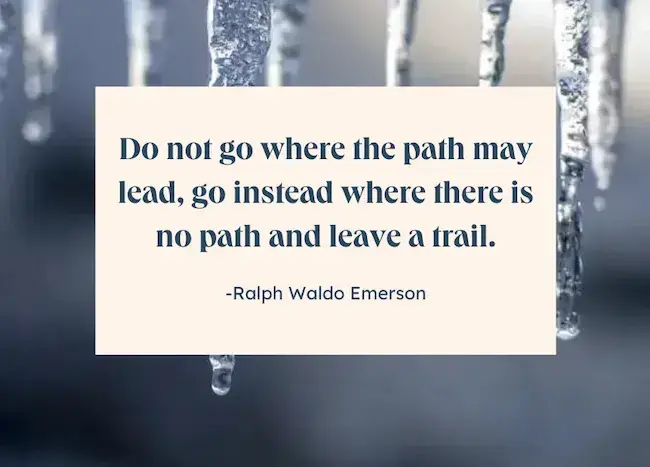
10. “Be yourself; everyone else is already taken.” – Oscar Wilde
Getting overwhelmed and stressed is a part of life. I feel my heart pound faster when I’m against tight deadlines at work or facing challenges outside of the office. These famous quotes remind me that life is beautiful and we should live it to the fullest. On the tough days, I find that these bits of optimism make all the difference.
11. “If life were predictable, it would cease to be life and be without flavor.” – Eleanor Roosevelt
12. “In the end, it‘s not the years in your life that count. It’s the life in your years.” – Abraham Lincoln
13. “Life is a succession of lessons which must be lived to be understood.” – Ralph Waldo Emerson
14. “You will face many defeats in life, but never let yourself be defeated.” – Maya Angelou
15. “Never let the fear of striking out keep you from playing the game.” – Babe Ruth
16. “Life is never fair, and perhaps it is a good thing for most of us that it is not.” – Oscar Wilde
17. “The only impossible journey is the one you never begin.” – Tony Robbins
18. “In this life, we cannot do great things. We can only do small things with great love.” – Mother Teresa
19. “Only a life lived for others is a life worthwhile.” – Albert Einstein
20. “The purpose of our lives is to be happy.” – Dalai Lama
21. “You may say I‘m a dreamer, but I’m not the only one. I hope someday you'll join us. And the world will live as one.” – John Lennon
22. “You only live once, but if you do it right, once is enough.” – Mae West
23. “To be yourself in a world that is constantly trying to make you something else is the greatest accomplishment.” – Ralph Waldo Emerson
24. “Don't worry when you are not recognized but strive to be worthy of recognition.” – Abraham Lincoln
25. “The greatest glory in living lies not in never falling, but in rising every time we fall.” – Nelson Mandela
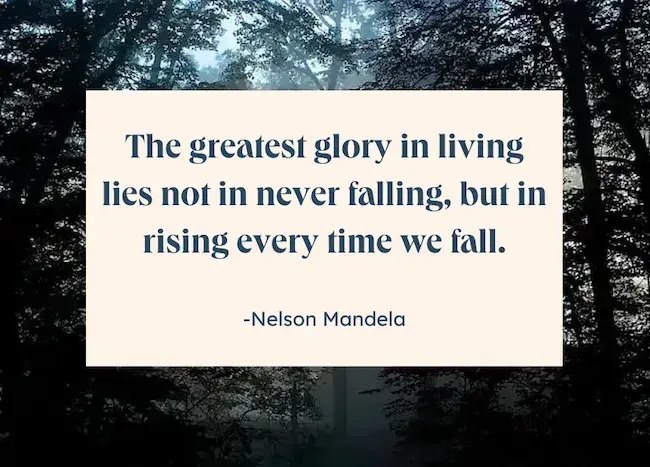
26. “Life is really simple, but we insist on making it complicated.” – Confucius
27. “May you live all the days of your life.” – Jonathan Swift
28. “Life itself is the most wonderful fairy tale.” – Hans Christian Andersen
29. “Do not let making a living prevent you from making a life.” – John Wooden
30. “Go confidently in the direction of your dreams! Live the life you've imagined.” – Henry David Thoreau
For more quotes like the one above, download our kit of 250+ famous quotes.
I’m a planner who loves to think ahead. But, even with all of my efforts, life throws me curveballs, and I need to figure out the best course of action. That's when I turn to these inspirational quotes.
Whether you're stuck in a creative rut or feeling down after a professional setback, these words can propel you to move forward.
31. “Keep smiling, because life is a beautiful thing and there's so much to smile about.” – Marilyn Monroe
32. “In the depth of winter, I finally learned that within me there lay an invincible summer.” – Albert Camus
33. “In three words, I can sum up everything I've learned about life: it goes on.” – Robert Frost
34. “So we beat on, boats against the current, borne back ceaselessly into the past.” – F. Scott Fitzgerald
35. “Life is either a daring adventure or nothing.” – Helen Keller
36. “You have brains in your head. You have feet in your shoes. You can steer yourself any direction you choose.” – Dr. Seuss
37. “Life is made of ever so many partings welded together.” – Charles Dickens

38. “Your time is limited, so don‘t waste it living someone else’s life. Don‘t be trapped by dogma — which is living with the results of other people’s thinking.” – Steve Jobs
39. “Life is trying things to see if they work.” – Ray Bradbury
40. “Many of life's failures are people who did not realize how close they were to success when they gave up.” – Thomas A. Edison
Who likes failure? When I make mistakes or don’t actualize my plans, I feel the sting. However, everyone experiences failure — even the most successful people. When I fail, I remind myself that outstanding leaders learn from these setbacks. They never give up and push forward instead.
If you’re down after a recent failure, I recommend checking out the quotes below to get inspired. These pearls of wisdom will motivate you to continue working toward your goals and be the most successful version of yourself.
41. “The secret of success is to do the common thing uncommonly well.” – John D. Rockefeller Jr.
42. “I find that the harder I work, the more luck I seem to have.” – Thomas Jefferson

43. “Success is not final; failure is not fatal: It is the courage to continue that count.” – Winston S. Churchill
44. “The way to get started is to quit talking and begin doing.” – Walt Disney
45. “Don't be distracted by criticism. Remember — the only taste of success some people get is to take a bite out of you.” – Zig Ziglar
46. “Success usually comes to those who are too busy to be looking for it.” – Henry David Thoreau
47. “Everything you can imagine is real.” – Pablo Picasso
48. “If you want to make your dreams come true, the first thing you have to do is wake up.” – J.M. Power
49. “There are no secrets to success. It is the result of preparation, hard work, and learning from failure.” – Colin Powell
50. “The real test is not whether you avoid this failure, because you won‘t. It’s whether you let it harden or shame you into inaction, or whether you learn from it; whether you choose to persevere.” – Barack Obama
51. “The only limit to our realization of tomorrow will be our doubts of today.” – Franklin D. Roosevelt
52. “It is better to fail in originality than to succeed in imitation.” – Herman Melville
53. “The future belongs to those who believe in the beauty of their dreams.” – Eleanor Roosevelt

54. “The road to success and the road to failure are almost exactly the same.” – Colin R. Davis
55. “Always remember, your focus determines your reality.” – George Lucas
56. “If you set your goals ridiculously high and it‘s a failure, you will fail above everyone else’s success.” – James Cameron
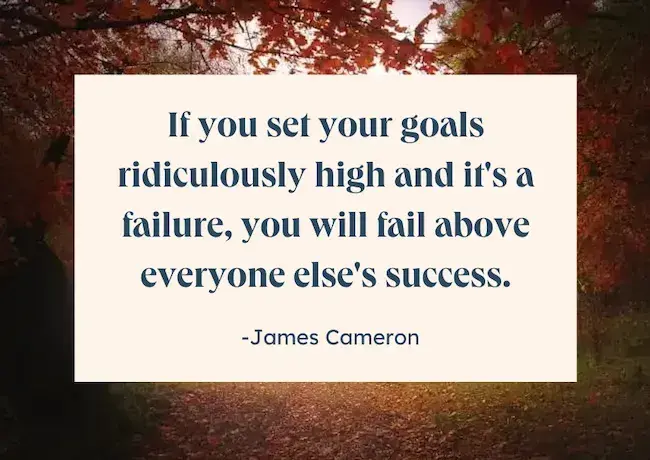
57. “If you really look closely, most overnight successes took a long time.” – Steve Jobs
58. “To be successful, you have to be selfish, or else you will never achieve. And once you get to your highest level, then you have to be unselfish.” – Michael Jordan
59. “Let the future tell the truth, and evaluate each one according to his work and accomplishments. The present is theirs; the future, for which I have really worked, is mine.” – Nikola Tesla
60. “Try not to become a man of success. Rather become a man of value.” – Albert Einstein
61. “Don't be afraid to give up the good to go for the great.” – John D. Rockefeller
62. “Leave nothing for tomorrow which can be done today.” – Abraham Lincoln
63. “Success is walking from failure to failure with no loss of enthusiasm.” – Winston Churchill
64. “When you undervalue what you do, the world will undervalue who you are.” – Oprah Winfrey
65. “If you want to achieve excellence, you can get there today. As of this second, quit doing less-than-excellent work.” – Thomas J. Watson
66. “If you genuinely want something, don't wait for it — teach yourself to be impatient.” -Gurbaksh Chahal
67. “The only place where success comes before work is in the dictionary.” – Vidal Sassoon
68. “If you are not willing to risk the usual, you will have to settle for the ordinary.” – Jim Rohn
69. “Before anything else, preparation is the key to success.” – Alexander Graham Bell
70. “In playing ball and in life, a person occasionally gets the opportunity to do something great. When that time comes, only two things matter: being prepared to seize the moment and having the courage to take your best swing.” – Hank Aaron
Need some words of encouragement? Look no further than these famous quotes from some of the greatest leaders, thinkers, and innovators of all time.
Beyond that, I’ve found that these quotes are so famous that they pop up in daily life. I’ve found myself nodding along and feeling assured when I know the person who said the words first. If you’re looking to know where a truism came from, you can check them out below.
71. “Believe you can, and you're halfway there.” – Theodore Roosevelt
72. “The only person you are destined to become is the person you decide to be.” – Ralph Waldo Emerson
73. “I've learned that people will forget what you said, people will forget what you did, but people will never forget how you made them feel.” – Maya Angelou
74. “The question isn‘t who is going to let me; it’s who is going to stop me.” – Ayn Rand
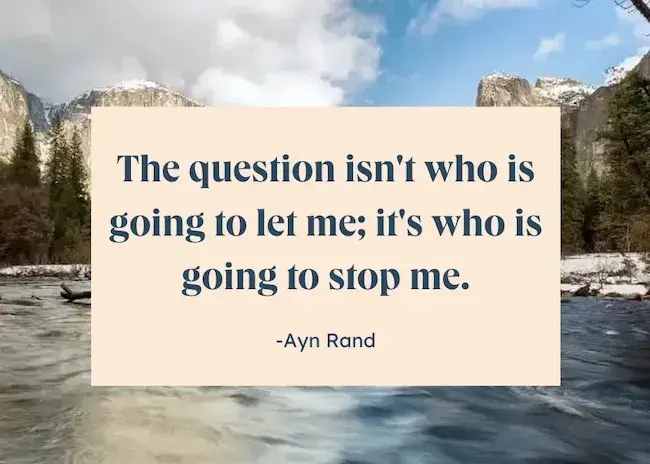
75. “Winning isn't everything, but wanting to win is.” – Vince Lombardi
76. “Whether you think you can or you think you can‘t, you’re right.” – Henry Ford
77. “You miss 100% of the shots you don't take.” – Wayne Gretzky
78. “I alone cannot change the world, but I can cast a stone across the water to create many ripples.” – Mother Teresa
79. “You become what you believe.” – Oprah Winfrey
80. “The most difficult thing is the decision to act; the rest is merely tenacity.” – Amelia Earhart
81. “How wonderful it is that nobody need wait a single moment before starting to improve the world.” – Anne Frank
82. “An unexamined life is not worth living.” – Socrates
83. “Everything you've ever wanted is on the other side of fear.” – George Addair
84. “Dream big and dare to fail.” – Norman Vaughan
85. “Courage is grace under pressure.” – Ernest Hemingway
86. "It is still best to be honest and truthful; to make the most of what we have; to be happy with simple pleasures; and have courage when things go wrong.” – Laura Ingalls Wilder
87. “Nothing is impossible, the word itself says, ‘I‘m possible!’” – Audrey Hepburn
88. “It does not matter how slowly you go as long as you do not stop.” – Confucius
89. “Don't find fault, find a remedy: anyone can complain.” – Henry Ford
90. “A man may die, nations may rise and fall, but an idea lives on.” – John F. Kennedy
91. “I have learned over the years that when one's mind is made up, this diminishes fear.” – Rosa Parks
92. “I didn't fail the test. I just found 100 ways to do it wrong.” – Benjamin Franklin
93. “If you‘re offered a seat on a rocket ship, don’t ask what seat! Just get on.” – Sheryl Sandberg
94. “With great power comes great responsibility.” – Stan Lee
95. “I would rather die of passion than of boredom.” – Vincent van Gogh
96. “If you look at what you have in life, you‘ll always have more. If you look at what you don’t have in life, you'll never have enough.” – Oprah Winfrey
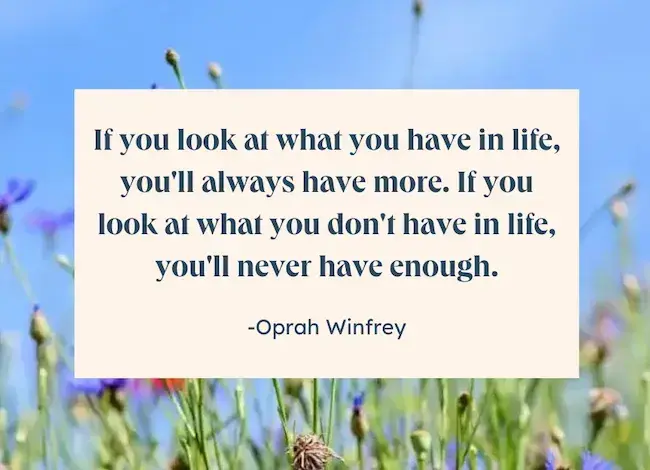
97. “Dreaming, after all, is a form of planning.” – Gloria Steinem
98. “Whatever the mind of man can conceive and believe, it can achieve.” – Napoleon Hill
99. “First, have a definite, clear, practical ideal; a goal, an objective. Second, have the necessary means to achieve your ends: wisdom, money, materials, and methods. Third, adjust all your means to that end.” – Aristotle
100. “Twenty years from now, you will be more disappointed by the things that you didn't do than by the ones you did do. So, throw off the bowlines, sail away from safe harbor, catch the trade winds in your sails. Explore, Dream, Discover.” – Mark Twain
The desire to quit is ever present in the face of loss or obstacles. But why quit? When challenges rear their heads, these famous motivational quotes keep my chin up and fuel my drive to win.
101. “The biggest risk is not taking any risk… In a world that is changing really quickly, the only strategy that is guaranteed to fail is not taking risks.” – Mark Zuckerberg
102. “Doing the best at this moment puts you in the best place for the next moment.” – Oprah Winfrey
103. “You don’t learn to walk by following rules. You learn by doing and by falling over.” – Richard Branson
104. “It’s fine to celebrate success, but it is more important to heed the lessons of failure.” – Bill Gates
105. “High expectations are the key to everything.” – Sam Walton
106. “Don’t you dare underestimate the power of your own instinct.” – Barbara Corcoran
107. “Luck is a dividend of sweat. The more you sweat, the luckier you get.” – Ray Kroc
108. “The difference between successful people and unsuccessful people is that successful people do all the things unsuccessful people don’t want to do.” – John Paul DeJoria
109. “Don’t be afraid to give up the good to go for the great.” – John D. Rockefeller
110. “The price of inaction is far greater than the cost of a mistake.” – Meg Whitman
There are only so many hours in a day, so I try not to waste any of them. A big part of accomplishing my ambitious to-do list is staying motivated. I like to listen to pump-up music or a meditation tape to get into the right headspace. Then, I can enter my flow state.
Another way to get ready for that race against the clock? Check out these quotes on time.
111. “Don’t watch the clock; do what it does. Keep going.” – Sam Levenson
112. “Time is money.” – Benjamin Franklin
113. “Time waits for no one.” – Unknown Author
114. “There is never enough time to do everything, but there is always enough time to do the most important thing.” – Brian Tracy
115. “All great achievements require time.” – Maya Angelou
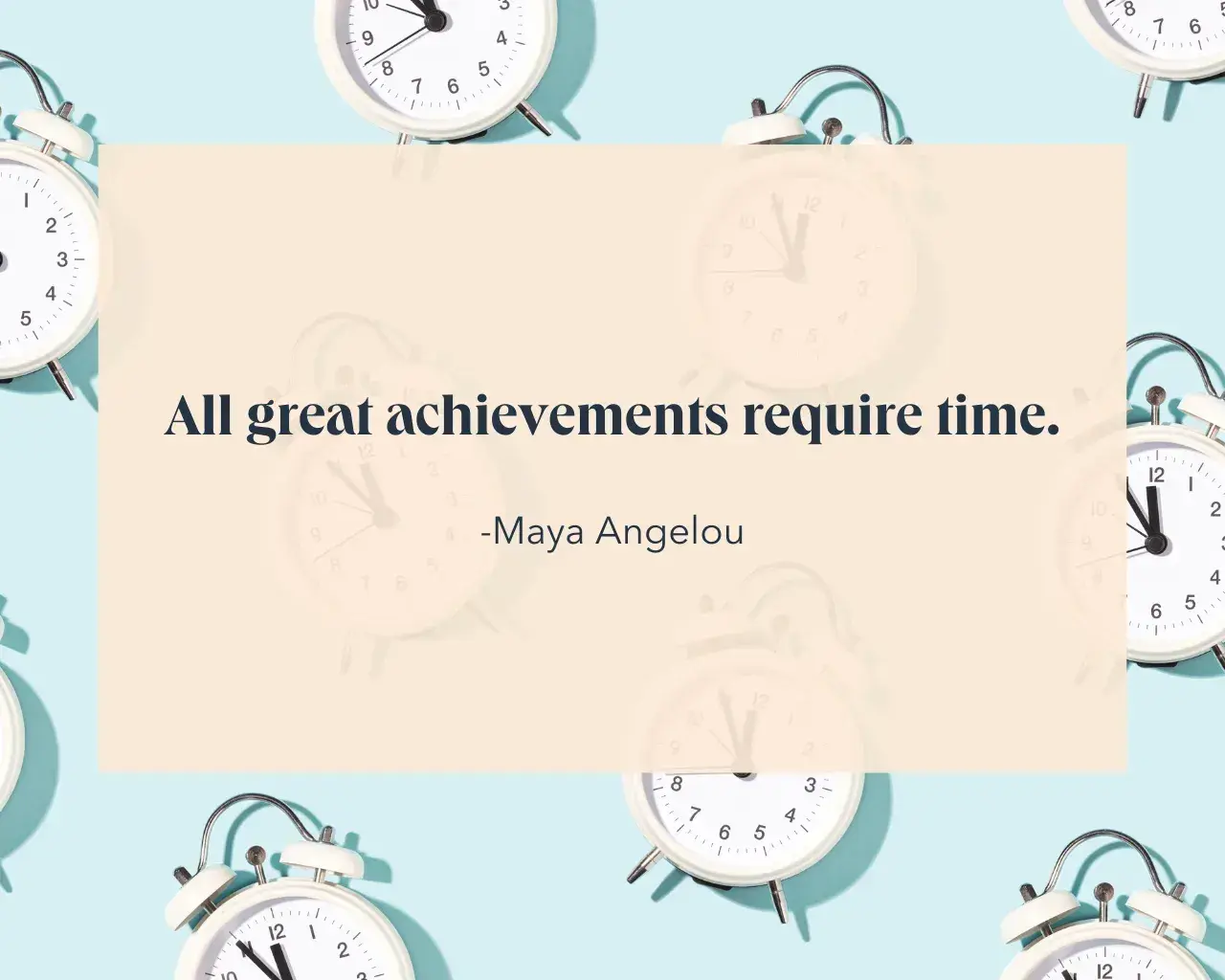
116. “You may delay, but time will not.” – Benjamin Franklin
117. “Time is more valuable than money. You can get more money, but you cannot get more time.” – Jim Rohn
118. “The trouble is, you think you have time.” – Jack Kornfield
119. “Either you run the day or the day runs you.” – Jim Rohn
120. “Never leave till tomorrow that which you can do today.” – Benjamin Franklin
121. “Lack of direction, not lack of time, is the problem. We all have twenty-four-hour days.” – Zig Ziglar
122. “A goal is a dream with a deadline.” – Napoleon Hill
More Quotes on Life
When I’m having trouble finding motivation, reading the words of other people can give me the boost I need. If you found this list of famous quotes insightful, you'll love these posts too:
Find Inspiration From the World's Strongest Leaders
Whether you're pursuing success as an entrepreneur or in sales, the experiences and lessons of others are valuable resources. Use these quotes to find the perfect words to fuel your ambition, ignite creativity, and remind yourself that success is within reach.
Editor's note: This post was originally published in August 2018 and has been updated for comprehensiveness.









 – Flipboard has more shares than Google+
– Flipboard has more shares than Google+



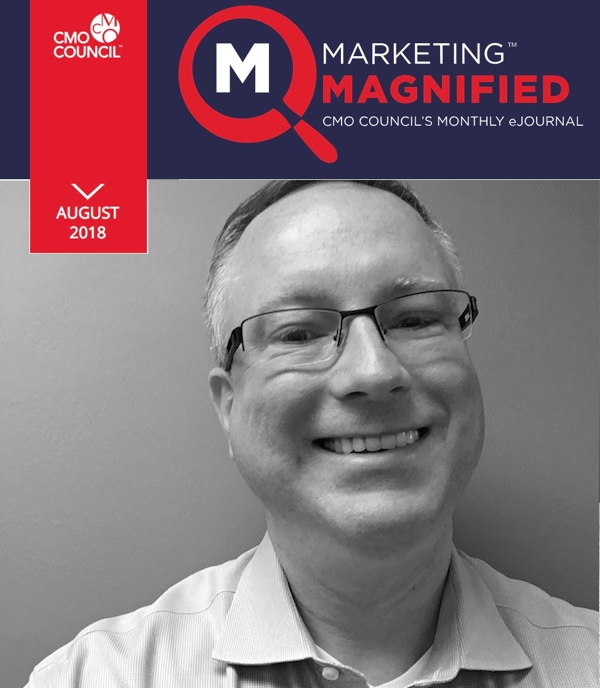







![Download Now: 250+ Famous Quotes [Free Kit]](https://no-cache.hubspot.com/cta/default/53/218f0385-73f5-48f1-9731-306238cbf450.png)






























 Carolyn Betts Fleming is founder and CEO of
Carolyn Betts Fleming is founder and CEO of 











